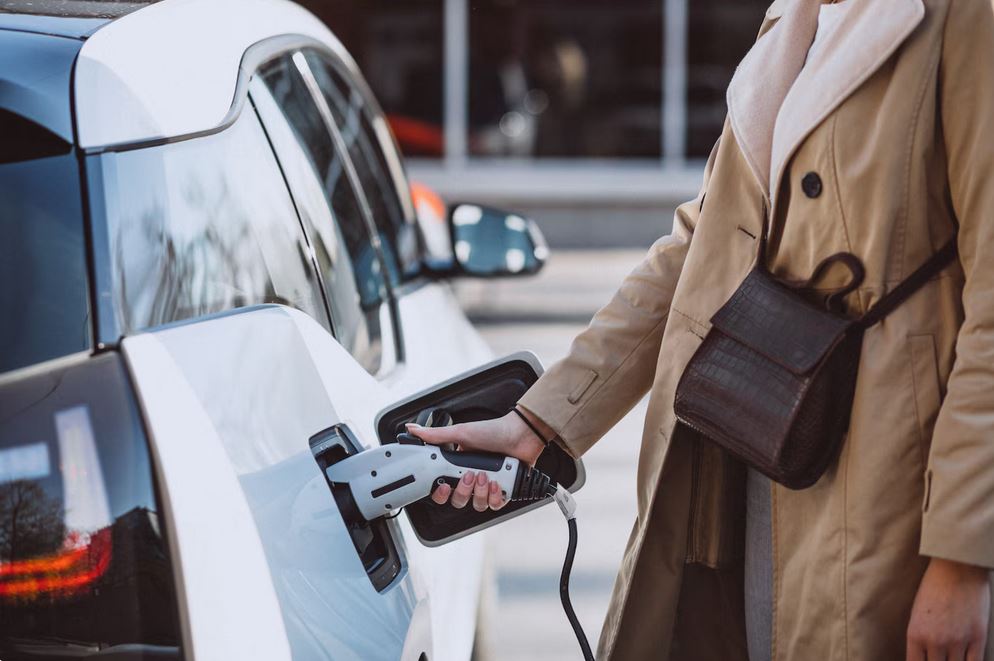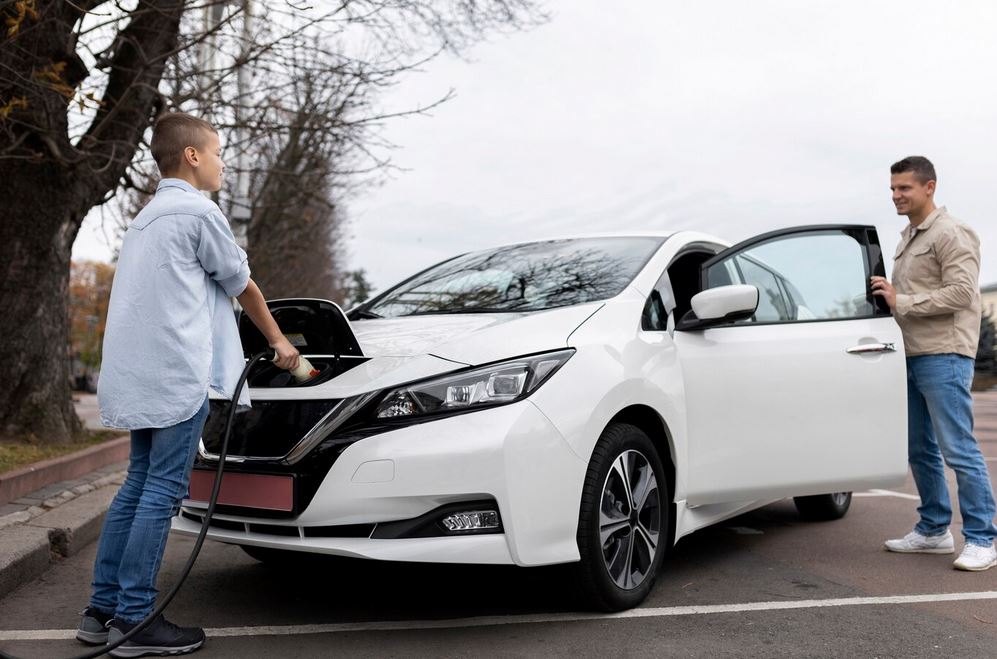Commercial Auto Insurance for EV Fleets: What Employers Need to Know

The rise of electric vehicle (EV) fleets in commercial operations is transforming how businesses approach transportation. With governments pushing for net-zero emissions—such as the U.K.’s 2030 ban on new petrol and diesel vehicles and the EU’s 2035 zero-emission target—employers are increasingly adopting EVs for their fleets. However, insuring these fleets presents unique challenges and opportunities. Companies like BiBerk, Infinity Auto, Next, and Progressive offer commercial auto insurance tailored to these needs, but what do employers need to understand about insuring EV fleets? This article answers key questions to guide businesses through the complexities of commercial auto insurance for electric vehicles, addressing costs, coverage options, and emerging trends.
Why Are EV Fleets Becoming a Business Priority?
What Drives the Shift to Electric Vehicle Fleets?
Businesses are transitioning to EV fleets due to regulatory mandates, environmental goals, and cost-saving potential. Governments worldwide are incentivizing EV adoption through tax credits and subsidies, while regulations like California’s Advanced Clean Fleets rule require zero-emission vehicles for certain commercial fleets by 2035. Additionally, EVs offer lower fuel and maintenance costs compared to traditional vehicles, making them attractive for businesses with high-mileage operations, such as delivery services or logistics firms.
How Do EVs Differ from Traditional Vehicles in Commercial Use?
EVs differ significantly from internal combustion engine (ICE) vehicles in design and operation. How so? They rely on advanced battery systems, sophisticated electronics, and fewer moving parts, which reduce maintenance needs but increase repair complexity. For instance, EV batteries are costly to replace, and specialized technicians are often required for repairs. These factors influence insurance considerations, as insurers like BiBerk and Progressive must account for higher repair and replacement costs when underwriting EV fleet policies.
Why Does This Shift Impact Commercial Auto Insurance?
The unique characteristics of EVs—higher upfront costs, specialized repairs, and emerging technologies—require tailored insurance solutions. Why is this significant? Insurers must adjust premiums and coverage to reflect the increased value of EVs and the potential for costly claims. According to a 2025 industry report, insuring EVs can be 20-30% more expensive than ICE vehicles due to battery replacement costs and limited repair infrastructure. Employers need to understand these dynamics to secure appropriate coverage from providers like Next and Infinity Auto.
Transition: With EVs reshaping fleet operations, let’s explore the specific factors influencing commercial auto insurance for these vehicles.
What Factors Influence Commercial Auto Insurance for EV Fleets?
Why Are EV Repair Costs Higher?
EV repairs are often more expensive than those for ICE vehicles. Why? EVs rely on complex components like lithium-ion batteries and advanced driver-assistance systems (ADAS), which require specialized parts and expertise. A 2024 study noted that EV repair costs can be 50% higher than for traditional vehicles, particularly for battery-related claims. Insurers like Progressive factor these costs into premiums, which can increase the overall expense of insuring an EV fleet.
How Do Battery Replacement Costs Affect Coverage?
The battery is the most expensive component of an EV, often costing $10,000-$20,000 to replace. How does this impact insurance? Damage to an EV battery—whether from accidents, floods, or wear—can lead to significant claims. Insurers like BiBerk and Next may include battery replacement in comprehensive coverage but could charge higher premiums or require specific endorsements to cover these costs fully. Employers must ensure their policies explicitly address battery-related claims to avoid unexpected expenses.
What Role Does Limited Repair Infrastructure Play?
The limited availability of EV repair shops and trained technicians creates challenges for insurers and fleet operators. How so? Delays in sourcing parts or finding qualified mechanics can extend downtime, increasing business interruption costs. Insurers like Infinity Auto may adjust policies to account for these delays, potentially offering coverage for rental vehicles or lost income. Employers should verify whether their insurance includes provisions for extended repair times.
How Do Safety Features Impact Premiums?
EVs often come equipped with advanced safety features like automatic emergency braking and lane-keeping assist. How do these affect insurance? These technologies can reduce accident rates, potentially lowering liability claims. However, repairing or replacing damaged sensors and cameras is costly, which may offset savings. Progressive and Next use telematics and usage-based insurance to reward safe driving, which can help offset higher premiums for EV fleets with robust safety systems.
Transition: Understanding these factors is crucial, but how do leading insurers address the unique needs of EV fleets? Let’s examine the offerings of BiBerk, Infinity Auto, Next, and Progressive.
How Do Leading Insurers Cover EV Fleets?
What Does BiBerk Offer for EV Fleet Insurance?
BiBerk, part of the Berkshire Hathaway Group, provides commercial auto insurance with a focus on small businesses. How does it handle EV fleets? BiBerk offers coverage for liability, collision, and comprehensive claims, which are critical for EVs due to their high repair costs. Its online platform allows employers to quickly obtain quotes and manage policies, but BiBerk does not cover hired or non-owned vehicles, which may limit options for businesses relying on temporary EVs during supply chain shortages. With an A++ AM Best rating, BiBerk ensures financial stability, making it a reliable choice for EV fleet coverage.
How Does Infinity Auto Support EV Fleet Owners?
Infinity Auto specializes in flexible commercial auto insurance tailored to business needs. What makes its EV coverage stand out? Infinity offers comprehensive policies that include bodily injury, property damage, and uninsured motorist protection, all of which are vital for EV fleets operating in urban or high-risk areas. Infinity adjusts its underwriting to account for EV-specific risks, such as battery damage, though this may result in higher premiums. Its customer-centric approach ensures businesses receive support during claims, particularly for complex EV repairs.
What Makes Next Insurance a Good Fit for EV Fleets?
Next Insurance focuses on small businesses, offering digital-first commercial auto insurance. How does it address EV fleet needs? Next provides customizable policies that cover collision, comprehensive, and liability risks, with options to include business interruption coverage for downtime caused by EV repairs. Its data-driven underwriting considers EV-specific factors, such as battery costs and repair delays. Next’s streamlined claims process helps employers recover quickly, making it ideal for businesses transitioning to EV fleets.
How Does Progressive Lead in EV Fleet Coverage?
Progressive is a market leader in commercial auto insurance, known for its comprehensive offerings. What sets its EV coverage apart? Progressive uses advanced analytics to tailor policies for EVs, factoring in higher vehicle values and repair costs. Its policies include liability, medical payments, and uninsured motorist coverage, with options for usage-based insurance that leverages EV telematics data. Despite slightly lower J.D. Power customer satisfaction scores compared to competitors, Progressive’s extensive network and coverage options make it a top choice for EV fleet insurance.
Transition: With insurers adapting to EV-specific risks, let’s explore the key coverage options employers should prioritize for their fleets.
Which Coverage Options Are Essential for EV Fleets?

Why Is Comprehensive Coverage Critical for EVs?
Comprehensive coverage protects against non-collision damages, such as theft, vandalism, or weather-related incidents. Why is this vital for EV fleets? EVs are susceptible to costly damage from floods or hail, particularly to their batteries and electronics. Insurers like BiBerk and Next include comprehensive coverage in their policies, but employers should confirm that battery replacement is explicitly covered, as this can significantly impact claim payouts.
How Does Collision Coverage Address EV Risks?
Collision coverage handles repairs or replacements after accidents, regardless of fault. How does this apply to EVs? Given the high cost of EV repairs—especially for advanced components like sensors or batteries—collision coverage is essential. Progressive and Infinity Auto offer robust collision coverage, but employers should ensure limits are sufficient to cover the elevated costs of EV repairs, which can exceed those of ICE vehicles by 30-50%.
What About Liability Coverage for EV Fleets?
Liability coverage protects businesses from costs associated with bodily injury or property damage caused by their vehicles. Why is this important for EV fleets? EVs’ rapid acceleration and quiet operation can increase accident risks in certain scenarios, such as urban deliveries. Insurers like Next and Progressive adjust liability premiums based on regional risks and driving patterns, so employers should assess their exposure and select appropriate limits.
How Can Business Interruption Coverage Help?
Business interruption coverage compensates for lost income due to fleet downtime. How is this relevant for EVs? Delays in EV repairs due to part shortages or limited technician availability can halt operations, especially for logistics or delivery businesses. While not always included in standard auto policies, insurers like BiBerk and Progressive may offer this through separate business policies, helping employers mitigate financial losses during disruptions.
Transition: With the right coverage in place, employers can further manage costs and risks. Let’s discuss strategies to optimize EV fleet insurance.
How Can Employers Optimize EV Fleet Insurance Costs?
Why Should Employers Conduct Risk Assessments?
A thorough risk assessment helps employers understand their EV fleet’s exposure to risks like accidents, theft, or weather events. How can this lower costs? By identifying high-risk routes or regions, businesses can adjust operations to reduce claims, potentially lowering premiums with insurers like Progressive. For example, avoiding flood-prone areas can minimize comprehensive claims. Next offers tools to assess risks, enabling employers to tailor coverage effectively.
How Can Telematics Reduce Insurance Costs?
Telematics systems monitor driver behavior, vehicle performance, and usage patterns. How do they benefit EV fleet insurance? Safe driving habits, such as avoiding rapid acceleration, can reduce accident risks, leading to discounts from insurers like Progressive and Infinity Auto. Additionally, telematics data can optimize routes and maintenance schedules, minimizing wear on EV components. Employers should inquire about usage-based insurance options to capitalize on these savings.
Why Is Comparing Quotes Essential?
Shopping around for insurance ensures employers find cost-effective coverage tailored to EV fleets. How does this work? BiBerk’s online model offers savings of up to 20% compared to traditional insurers, while Progressive’s extensive options provide flexibility. By comparing quotes from BiBerk, Infinity Auto, Next, and Progressive, employers can balance cost and coverage, ensuring protection against EV-specific risks without overpaying.
How Can EV Incentives Offset Insurance Costs?
Government incentives, such as tax credits for EV purchases, can reduce the upfront cost of building an EV fleet. How does this impact insurance? Lower acquisition costs can free up budgets for comprehensive coverage or higher liability limits. Employers should explore federal and state incentives, such as those under the U.S. Inflation Reduction Act, and discuss with insurers like Next how these savings can be factored into policy planning.
Transition: As EV adoption grows, what does the future hold for commercial auto insurance? Let’s explore emerging trends and their implications.
What Are the Future Trends in EV Fleet Insurance?
How Will Autonomous Driving Technology Impact Coverage?
The rise of autonomous EVs introduces new insurance considerations. How so? Self-driving technologies can reduce accidents by minimizing human error, potentially lowering liability premiums. However, repairing or replacing autonomous systems is costly, which may increase comprehensive and collision premiums. Insurers like Progressive are developing policies for autonomous EVs, using telematics to assess risk and offer personalized rates.
Why Will Battery Technology Advancements Matter?
Advancements in EV battery technology, such as solid-state batteries, promise longer ranges and lower costs. How will this affect insurance? Improved battery durability could reduce replacement claims, potentially lowering premiums over time. However, as these technologies are still emerging, insurers like BiBerk and Infinity Auto may initially charge higher rates to account for uncertainties in repair costs and availability.
How Will Regulatory Changes Shape Insurance Needs?
As governments tighten emissions regulations, EV adoption will accelerate, increasing the demand for specialized insurance. What does this mean for employers? Insurers will refine underwriting models to address EV-specific risks, such as cybersecurity threats to connected vehicles. Progressive and Next are likely to lead in offering cyber coverage add-ons, protecting fleets from hacking risks that could disrupt operations.
What Role Will Data Analytics Play?
Data analytics will play a growing role in EV fleet insurance. How? Insurers are leveraging vehicle data to offer usage-based policies that reward efficient and safe driving. For example, Progressive’s Snapshot program uses telematics to adjust premiums based on real-time driving data. As EV fleets generate more data, insurers like Next will use predictive models to refine risk assessments, offering employers more tailored and cost-effective coverage.
Transition: To conclude, let’s summarize the key insights and offer guidance for employers navigating EV fleet insurance.

How Can Employers Prepare for EV Fleet Insurance?
What Are the Key Takeaways for Employers?
Insuring EV fleets requires a deep understanding of their unique risks and coverage needs. Why is this critical? Employers must navigate higher repair costs, battery replacement expenses, and evolving regulations while securing affordable policies. Key takeaways include:
- EV-Specific Risks: Higher repair and battery replacement costs drive up premiums, requiring tailored coverage from insurers like BiBerk and Progressive.
- Coverage Options: Comprehensive, collision, liability, and business interruption coverage are essential to protect EV fleets from diverse risks.
- Cost Optimization: Risk assessments, telematics, and quote comparisons can help employers manage insurance costs effectively.
- Insurer Adaptability: BiBerk, Infinity Auto, Next, and Progressive offer specialized solutions, but employers must choose policies that align with their fleet’s needs.
How Can Employers Stay Ahead?
To prepare for the future, employers should partner with insurers that offer flexible, data-driven policies. Regularly reviewing coverage, leveraging telematics, and staying informed about EV technology and regulations will ensure fleets remain protected. By working with providers like Next and Progressive, businesses can secure comprehensive coverage that addresses the unique challenges of EV fleets while optimizing costs.
This article has provided a roadmap for employers to navigate commercial auto insurance for EV fleets. By understanding the factors influencing coverage, exploring insurer options, and adopting proactive strategies, businesses can confidently transition to electric fleets, ensuring both operational efficiency and financial protection in a rapidly evolving landscape.
You may also be interested in How Climate & Supply Chain Risks Influence Your Commercial Auto Coverage



